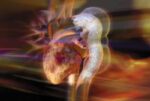Original title: Long-term outcomes following infrapopliteal angioplasty for critical limb ischemia. Reference: Ruby C. Lo et al. J Vasc Surg 2013;-:1-10. Angioplasty has established itself as an alternative for the treatment of infrainguinal peripheral disease with comparable results in terms of limb salvage for surgery. However, this data refers to the iliac or femoral territory but it is...
Coronary angioplasty reduces the risk of spontaneous myocardial infarction in chronic stable patients.
Original title: Percutaneous Coronary Intervention Versus Optimal Medical Therapy for Prevention of Spontaneous Myocardial Infarction in Subjects With Stable Ischemic Heart Disease. Reference: Sripal Bangalore et al. Circulation. 2013;127:769-781 In the context of coronary angioplasty complications may arise, such as a periprocedural infarction. However, this event does not have the same clinical consequences compared to a spontaneous infarction. ...
A worse prognosis for incomplete revascularization in both angioplasty and surgery.
Original title: The Negative Impact of Incomplete Angiographic Revascularization on Clinical Outcomes and Its Association With Total Occlusions. The SYNTAX (Synergy Between Percutaneous Coronary Intervention with Taxus and Cardiac Surgery) Trial. Reference: Vasim Farooq et al. J Am Coll Cardiol 2013;61:282–94 In patients with complex coronary artery disease who underwent coronary artery bypass surgery, (CABG), or percutaneous transluminal...
Chronic Total Occlusion: increasingly better results and fewer complications.
Original title: Angiographic Success and Procedural Complications in Patients Undergoing Percutaneous Coronary Chronic Total Occlusion Interventions. A Weighted Meta-Analysis of 18,061 Patients From 65 Studies. Reference: Vishal G. Patel et al. J Am Coll Cardiol Intv 2013. Article in press. Chronic Total Occlusions (CTOs) are found in between 15% and 30% of patients undergoing coronary angioplasty. Successful CTOs...
Chronic Type B Dissection, better with endoprosthesis than with medical treatment
Original title: The results of stent graft versus medication therapy for chronic type B dissection Reference: Xin Jia et al. J Vasc Surg 2013;57:406-14 In many institutions patients with Chronic Stanford Type B Aortic Dissection is most often treated medically, and the thoracic endovascular aortic repair implant TEVAR or the surgical procedure are reserved for those who evolve...
Fenestrated prosthetics versus surgery for aneurysms of the abdominal aorta with hostile neck
Original title: Comparison of fenestrated endovascular and open repair of abdominal aortic aneurysms not suitable for standard endovascular repair. Reference: Rana Canavati et al. J Vasc Surg 2013;57:362-7. Studies in patients with infrarenal abdominal aortic aneurysm that could receive a standard stent versus conventional surgery, showed reduced perioperative mortality with endovascular treatment. However, these same results in patients...
Renal denervation at one year, the benefit remains.
Original title: Renal Sympathetic Denervation for Treatment of Drug-Resistant Hypertension Clinical Perspective Reference: Murray D. Ester et al. Circulation 2012; 126: 2976-2982 Renal sympathetic activation contributes to the pathogenesis of hypertension. The Symplicity HTN – 2 was a multicenter, randomized study which demonstrated that renal denervation produced a significant decrease in blood pressure at 6 months in patients...
MRI different injuries post carotid angioplasty versus endarterectomy.
Original title: Characteristics of Ischemic Brain Lesions After Stenting or Endarterectomy for Symptomatic Carotid Artery Stenosis : Results From the International Carotid Stenting Study-Magnetic Resonance Imaging Substudy (ICSS-MRI). Reference: Henrik Gensicke et al. Stroke 2013;44:80-86. This work is a sub-study using magnetic resonance imaging (MRI) of the International Carotid Stenting Study (ICSS) that randomized carotid angioplasty (CAS) or...
Thrombus Aspiration is useful in AMI
Original title: A Prospective Randomized Trial of Trombectomy Versus No Thrombectomy in Patients With ST-Segment Elevation Myocardial Infarction and Thrombus-Rich Lesion. MUSTELA (MUltidevice Thrombectomy in Acute ST-Segment ELevation Acute Myocardial Infarction) Trial Reference: Marco De Carlo, et al. J Am Coll Cardiol Intv 2012;5:1223–30 The main objective during primary PCI is myocardial reperfusion, which is limited by distal...
Ambulatory Transradial Percutaneous Coronary Intervention
Original title: Ambulatory Transradial Percutaneous Coronary Intervention: A Safe, Effective, and Cost-Saving Strategy. Reference: Philippe Le Corvoisier et al. Catheterization and Cardiovascular Interventions 81:15–23 (2013). The number of PCI procedures has increased and for many interventional cardiology centers PC interventions entail significant resource consumption. Reducing post procedure hospital stay could reduce costs and optimize hospitalization resources. The safety...









